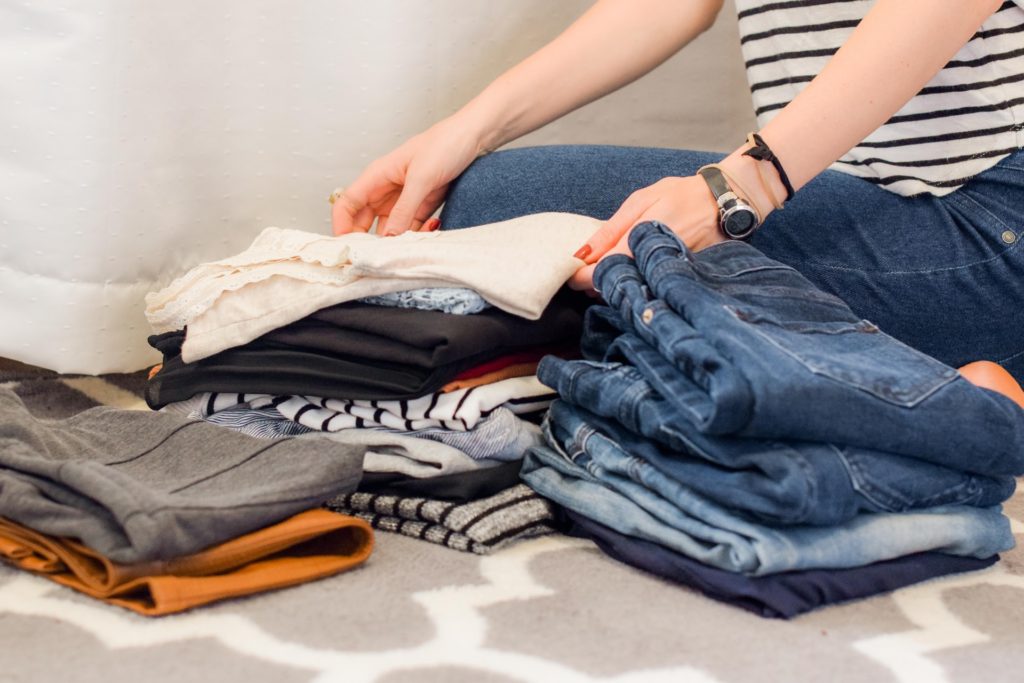STOP. Slow down. Let’s take the time to discuss what’s important and what you need to understand before joining the slow fashion movement. It’s much more than just adding to the 5 million Instagram posts with #slowfashion. In some ways, the speed and disposability of social media contradict slow fashion movement. The movement is a way of life, a way of thinking that benefits our personal lives and the planet.
So what exactly is the slow fashion movement, and how can you ‘do’ slow fashion?
What is the Slow Fashion Movement?
Slow fashion means to takes the time to understand the full impact of clothing with a holistic approach to the way we consume fashion.
True slow fashion products are made thoughtfully with high quality and longevity in mind. This includes the ecology, ethics and sustainability of clothing.
The environmental impact of our lives is a hot topic, especially in the fashion industry. In slow fashion, there’s a huge emphasis on reducing the strain being placed on the environment while meeting consumer needs. Not only does it avoid habitat destruction and pollution, but it actively looks to positively affect ecology throughout a product’s lifecycle. New garments are created using natural and recycled fibres, and unwearable fabrics are recycled into fresh items to reduce waste.
Ethics play an important part in slow fashion, ensuring that the people involved in manufacturing and supply chains benefit from the industry. Mindful companies now choose to work with local communities rather than outsourcing to larger factories. For instance, rather than large scale factories, relevant communities are creating culture-inspired clothing and accessories. This has multiple benefits, including better garment creation, as well as additional work for local communities.
Slow fashion sustainability takes into account ecology and ethics, while incorporating the longevity of a product. It hugely focuses on the durability of materials, with the need for the final product to last years—if not a lifetime. It also takes design into account, with slow fashion movement developing its own distinctive style. This category is crucial, as clothing should be timeless and simple. If you’re going to be wearing something for years, it needs to be simple enough to repair, and can’t go out of fashion.
How to ‘Do’ the Slow Fashion Movement?
Slow fashion is more than just hashtagging. Understanding it is quite a simple process, but committing and implementing the change requires a shift in thinking. Everything you do must take into account the full lifecycle of a product. So, where do you even start?
Well, you can start by analysing your wardrobe, then downsizing. Clear out anything you don’t wear or need; it’s time to start thinking minimalist. Do you really need seven pairs of jeans? Not really!

Don’t just throw clothing in the trash, that’s an instant fail. Instead, take the time to clean and fix everything before donating it to second-hand charity shops or selling them on marketplaces.
The first step to slow fashion is reducing what you have and how much you buy. Just because you’ve got all this extra closet space doesn’t mean you need to fill it with new eco-friendly, ethical, items.
Don’t buy anything unless you need it.
When you are shopping, take a mindful approach. Go to second-hand stores for sustainable fashion choices, saving you a bundle of cash. If you need new items, research a product and its company before making a purchase. Take into account issues, such as greenwashing, and look for brands that champion slow fashion.
It is an intimidating lifestyle shift at first. Cleaning out your wardrobe is an emotional process, but an important step to changing your mindset. You’ll quickly realize what you really need to live a happy life. In fact, it breathes freedom into your life, with less things literally and metaphorically weighing you down.
You’ll even start to feel the mindset change across your whole life from fashion, to food, to transport. Start embracing the slow life.
Characteristics of Slow Fashion
There’s a lot to take into account when considering slow fashion movement. Looking at the whole life of a product is a big undertaking. Slow fashion clothing does have some distinct features for you to look at when making decisions.
Here is a list of what what slow fashion is:
- Slows down the pace of shopping and consumption
- A lifestyle choice
- It’s about making mindful and conscious choices
- Timeless and simple
- Takes a long-term view of style and durability
- Quality, not quantity. Think years, not weeks
- Purposeful and intentional
- Slow fashion is the whole holistic lifecycle of a product
- Removes the disposability of products
- Ethical. Takes into account people, communities, and the economy


 6 Eco-Friendly Brands That Produce Ethical Jeans
6 Eco-Friendly Brands That Produce Ethical Jeans
No, we don’t need seven pairs of jeans! I love the simple concept of shopping mindfully. It’s good for the environment, the pocketbook and our peace of mind (no clutter). Thank you for a wonderful read on slow fashion and how we can change course for sustainable living.
No problem Ana, I’m glad you enjoyed reading it!